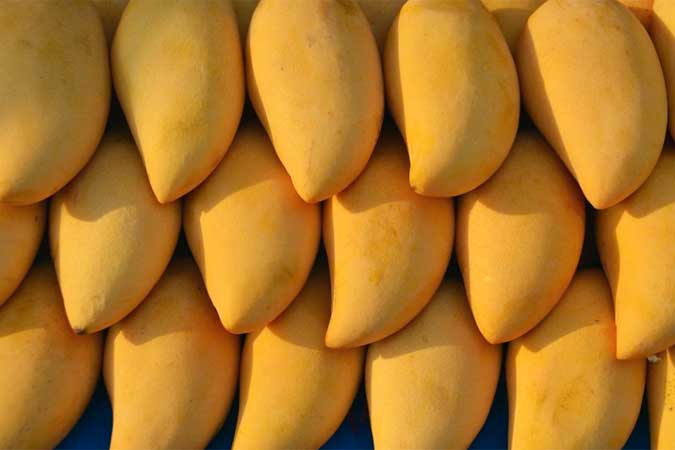ONE of mango farming’s most urgent challenges is identifying the best-quality planting materials emerging from nurseries, to ensure that inferior specimens of the leading variety, the carabao mango, do not propagate on new land, a leading academic said.
Visayas State University President Edgardo E. Tulin, speaking at a forum on the mango industry organized by the Science and Technology department, said: “We must ensure the quality of the true-to-type carabao mango that must be planted in new plantations.”
Mr. Tulin was speaking at Department of Science and Technology (DoST) virtual gathering known as the Farms and Industry Encounters through the S&T Agenda (FIESTA) conference on Mango, in which industry stakeholders exchanged ideas on innovative practices in mango cultivation.
He said the quality-control problem is complicated by the prevalence of smallholder farms, which account for about 73% of the total area planted to mango.
The industry consists of about 2.5 million farmers.
One of the presenters at the conference, Education Program Specialist Mary Grace S. Balbuena of the University of Southern Mindanao Agricultural Research and Development Center, said her team has tested a simple sequence repeat (SSR) marker kit and found that some mango nurseries are mislabeling the planting materials they distribute.
“There is a need to address the problem of mislabeling of mango seedlings produced in the nursery before they are commercially distributed,” Ms. Balbuena said. Mislabeled seedlings, she added, lead to waste and lost production.
The SSR kit works by determining the degree of relatedness of various types of mango. The kit returns results in a day or two and costs around P500-600.
Another product, a diagnostic kit known as the “dipstick,” validates and verifies mislabeled mango cultivars. The dipstick is targeted at nursery operators who must be trained in using the kit. The cost of one dipstick is P160.
In the three months to June, mango production declined by 0.2% year on year to 556.82 thousand metric tons (MT), according to the Philippine Statistics Authority.
The carabao mango accounted for 80.9% of the total crop, or 450.48 thousand MT.
Due to the numerous mango varieties, the inability to identify the correct species has been a longstanding problem. While morphological characteristics, such as color or texture, are still useful for identification, Mr. Tulin said that these are not reliable.
Technology is needed to “ensure the authenticity of the preferred mango variety as planting material for dispersal, and to ensure quality raw materials for processing required in the export market,” he added.
“We know that the Philippines is one of the leading global exporters of mango, with $91 million in exports, and we account for about 4% of the global market,” Mr. Tulin said. “Eighty-five percent of this is actually in the form of dried mango, to export destinations like the US, Hong Kong, South Korea, and Japan, among others.”
An agricultural engineering professor, Roger C. Montepio of the University of Southeastern Philippines (USeP), said technology must also help farmers adjust to the impact of climate change.
“At present, climate change has affected the fruiting season, and made the wet and dry season unpredictable. Hence, new technologies must be sustainable and aims toward lessening the impact of farming and processing towards the environment,” he said.
USeP has developed a suite of technologies known as MangoFiTek, which is a package of tools helps improve mango production across the pre-to-post harvest stages.
Other innovations highlighted at the conference were the Power Y-Sprayer Nozzle, which minimizes the loss of spray solution and the volume of solution contaminating operators, as well as the V-Sigpao mechanical fruit picker that minimizes mechanical bruising, ensuring that more fruit enter the market unblemished, commanding a higher price.
FIESTA will run from Dec. 9, and 16-17. — Luisa Maria Jacinta C. Jocson
